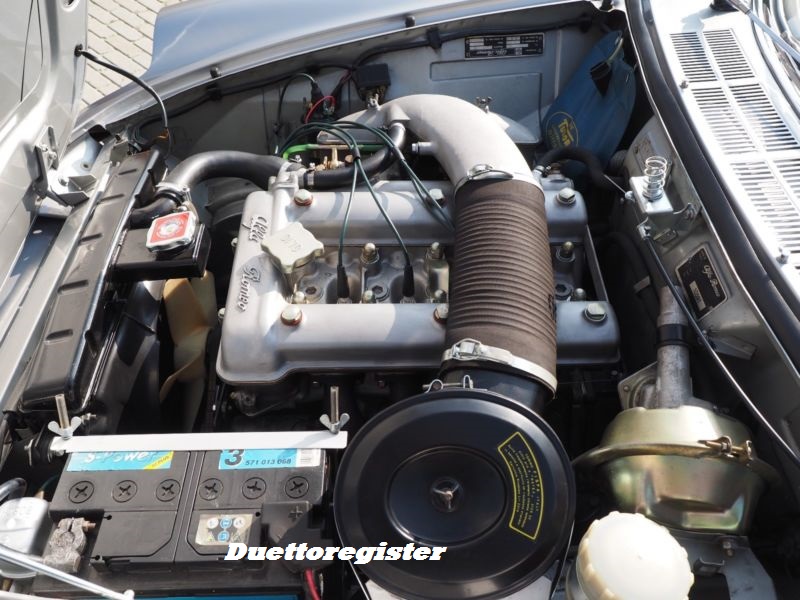
Via Veloce by Wille R. www.veloce.se since November 1995 and still here.
Alfa Romeo Duetto 1966 - 1969 FAQ --![]()
1300 Spider Junior
Compared to the 1750, the 1300 Junior’s alternator was rated at a lower 300 Watts, the same power as that on the Duetto, but this were the only difference.
The 1300 engine was shorter in both stroke and bore than either the 1600 or 1750 engines, and with only a millimetre separating the bore and stroke, it was virtually an all-square unit. Dubbed type number 00530, it was effectively the same engine that was fitted to the old 101-series Giulietta Spider, and the same as the GT Junior’s.

Not all 1300 Juniors had the brake booster, but approximately half of the production had. It is a really good looking engine bay.
This engine had different specification carburettors again: twin Weber 40 DCOE 28 specification, or Dell’Orto DHLA40, or Solex C40 DDH-4, all of them twin-choke carbs. There was also a different choice of air cleaner/filter. Unlike the 1750 engine, which had a higher 9.7-litre coolant capacity, the 1300 engine retained the Duetto’s 7.5-litre capacity system.
With a 9.0:1 compression ratio, the engine developed 89bhp at 6000rpm (according to the measuring system, other sources also quote 87bhp or 88bhp). Its maximum torque output was 101lb ft at 3200rpm (other sources quote 102lb ft at 3000rpm).
In broad terms the Junior duplicated the transmission layout of the larger-engine Spider. However the top (fifth) gear ratio was slightly shorter than that on the Duetto and 1750 Spider Veloce, at 0.860 rather than 0.790, echoing the gear-set of the GT Junior coupe. It also had the lower Duetto-type 4.555:1 final drive in effort to maintain acceleration. For reasons of parts standardisation, the same new-type single-plate hydraulic clutch as the 1750 Veloce was fitted.
If you have any comments, please send an E-mail

#